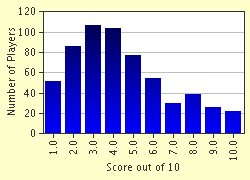Quiz Answer Key and Fun Facts
1. What happened in Italy in 1527?
2. In which year did King Vittorio Emanuele II di Savoia die?
3. Which person do we connect with the year 1498 in Italian history?
4. Which King of Italy was assassinated in 1900?
5. In which year did Charles VIII of France attack Florence?
6. What significant development began in 1861?
7. Which year is generally associated with la Spedizione dei Mille?
8. Who said: "If you play your trumpets, we will ring our bells"?
9. Who was known as "the King of May"?
10. Do you know which year saw the devastating Plague in Florence?
Source: Author
maria36
This quiz was reviewed by FunTrivia editor
bloomsby before going online.
Any errors found in FunTrivia content are routinely corrected through our feedback system.
